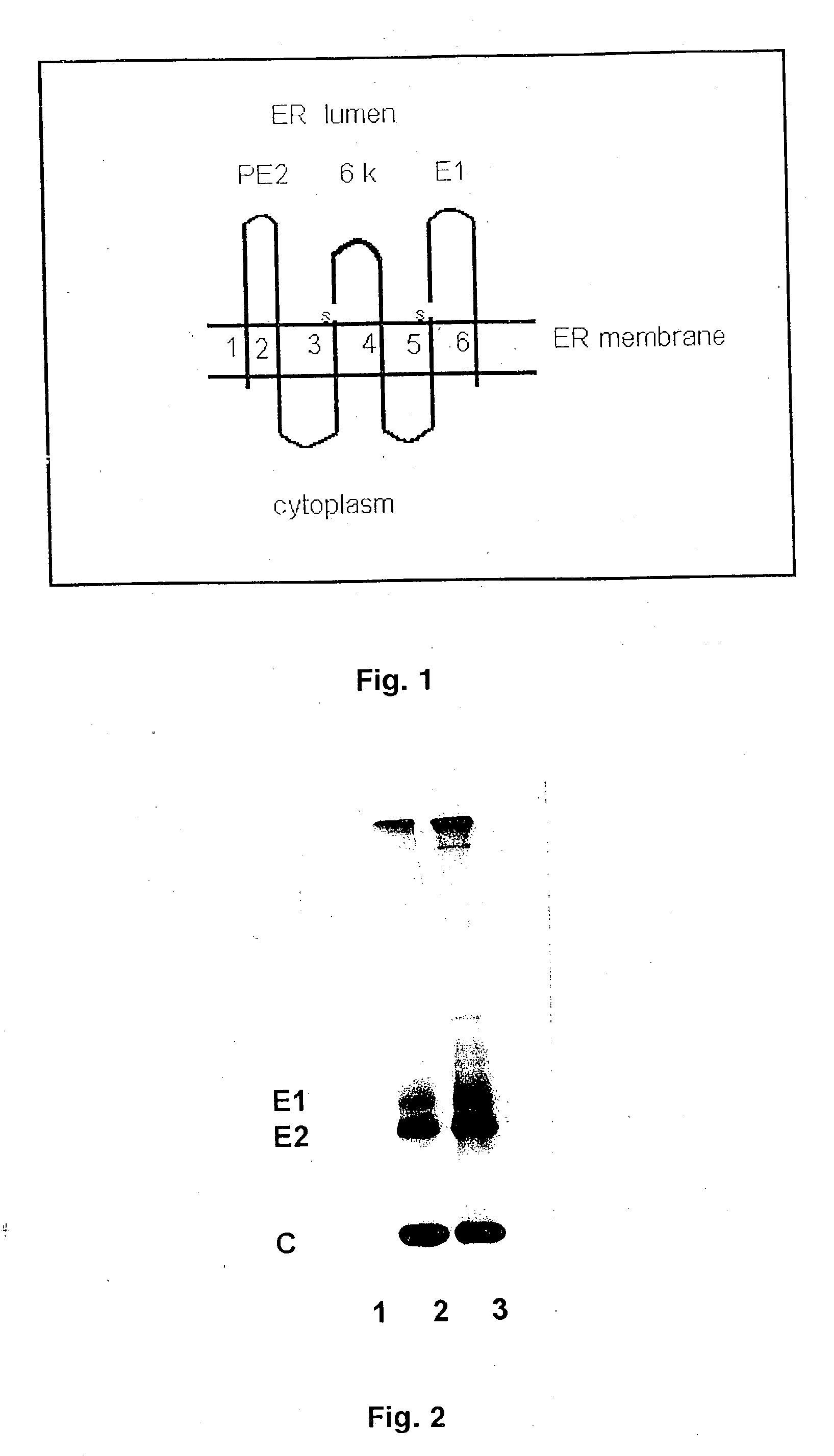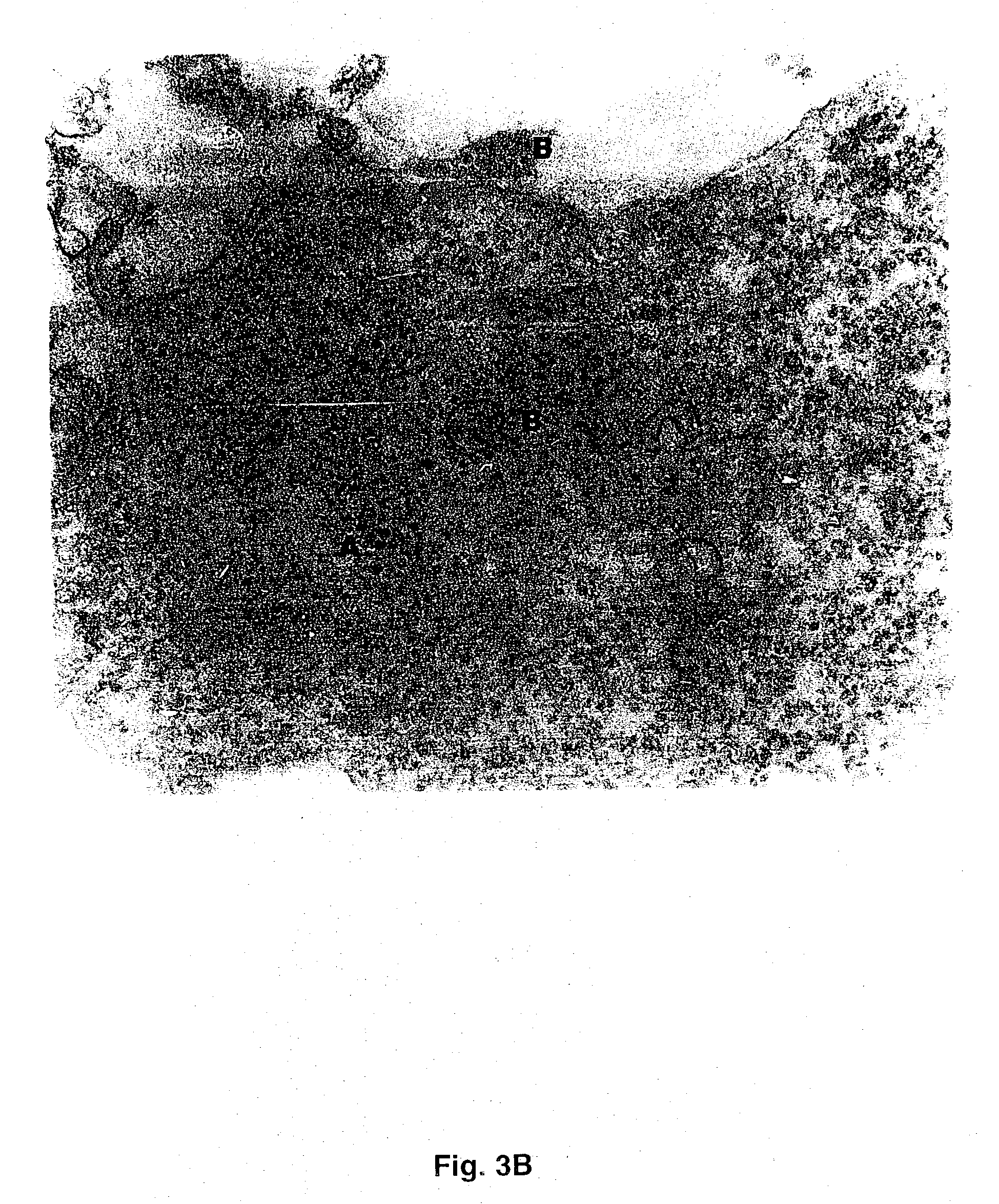Membrane virus host range mutations and their uses as vaccine substrates
a technology of membrane virus and host range, which is applied in the field of mutated arthropod vectored viruses, can solve the problems of poor assembly in the mammalian host cell, and achieve the effect of reducing infectivity
- Summary
- Abstract
- Description
- Claims
- Application Information
AI Technical Summary
Problems solved by technology
Method used
Image
Examples
example 1
A Single Amino Acid Deletion Mutant, K391
[0056]Using the full length clone of the Alpha virus Sindbis described previously (Liu et al 1996, Rice et al., 1987), a deletion removing 3 bases encoding a lysine at position 391 in the amino acid sequence of the virus glycoprotein E2 has been constructed. This lysine is part of the putative membrane-spanning domain of this protein (Rice et al 1982).
[0057]Site-directed mutagenesis was used to generate a deletion mutant (Lys391) in Toto 1101, a plasmid containing the full-length Sindbis cDNA and an SP6 promoter that can be used to transcribe infectious RNA from the clone in vitro (Rice et al., 1987; Liu and Brown, 1993a). Using the megaprimer method of PCR mutagenesis (Sarkar and Sommer, 1990) described previously (Liu and Brown, 1993a), three nucleotides (nucleotides 9801, 9802, 9803) were removed in the cDNA clone of Toto 1101, resulting in the removal of the codon AAA (K391).
[0058]A 30 base oligonucleotide of the sequence, 5′CTCACGGCGCGCA...
example 2
In Vitro Transcription and RNA Transfection of K391
[0059]Plasmid DNA containing the full-length cDNA copy of Sindbis virus K391 or wild type RNA was linearized with XhoI and transcribed in vitro with SP6 RNA polymerase as described previously (Rice et. al., 1987). 1 μg of Xho I linearized K391 cDNA or wild type Sindbis virus cDNA was transcribed in buffer consisting of 80 mM Hepes, pH 7.5, 12 mM MgCl, 10 mM DTT, 2 mM spermidine and 100 μgm BSA with 3 mM each ATP, UTP, CTP, 1.5 mM GTP and 4.5 mM m7 GpppG, 20 units SP6 RNA polymerase and 20 units RNase inhibitor in a 20 μl reaction volume. After incubation at 37° C. for 2 hours, RNA production was assayed by running 2 μl of the RNA product on a 1% agarose gel.
[0060]Baby Hamster Kidney (BHK21) cells and Aedes albopictus (mosquito) cells were transfected with RNA derived from the mutant or wild type clone. Mosquito cell transfections were carried out using 5×106 cells resuspended in RNase free electroporation buffer consisting of 20 mM ...
example 3
Metabolic Radioactive Labeling of Viral Proteins
[0063]Subconfluent monolayers of BHK21 cells in 25 cm flasks were transfected with wild type or K391 mutant RNA as described above. Monolayers were starved for 30 min in methionine- and cysteine-free medium (MEM-E) containing 1% FCS, 2 mM glutamine and 5% TPB (starvation medium). At 16 hours post-transfection, cells were pulse-labeled with starvation medium containing 50 μCi / ml [35S] Met / Cys protein labeling mix for 20 minutes. Labeling was terminated by washing the monolayers with PBS containing 75 μg / ml cycloheximide. Monolayers were chased for 45 minutes in medium containing 10 times the normal concentration of methionine and cysteine and 75 μg / ml cycloheximide.
PUM
| Property | Measurement | Unit |
|---|---|---|
| volume | aaaaa | aaaaa |
| pH | aaaaa | aaaaa |
| pH | aaaaa | aaaaa |
Abstract
Description
Claims
Application Information
 Login to View More
Login to View More - R&D
- Intellectual Property
- Life Sciences
- Materials
- Tech Scout
- Unparalleled Data Quality
- Higher Quality Content
- 60% Fewer Hallucinations
Browse by: Latest US Patents, China's latest patents, Technical Efficacy Thesaurus, Application Domain, Technology Topic, Popular Technical Reports.
© 2025 PatSnap. All rights reserved.Legal|Privacy policy|Modern Slavery Act Transparency Statement|Sitemap|About US| Contact US: help@patsnap.com



